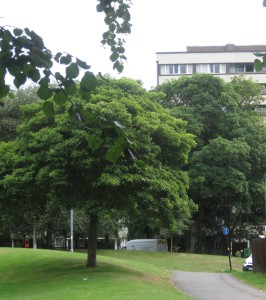Alan Clawley on an extinct species in town planning.
The Public Architect is mainly a twentieth century phenomenon that lasted from the end of the Second World War to the mid-1990s.
Local authorities, development corporations and central government departments all employed their own architects who were also often town planners, to organise the country’s huge post-war building programme. London had an Architect to the Council and Superintending Architect of Metropolitan Buildings from 1889 to 1986 (when the Greater London Council was abolished by Margaret Thatcher). They included Sir Robert Matthew who was responsible for the Royal Festival Hall 1951, Sir Leslie Martin, and Hubert Bennett whose department designed the Brutalist South Bank centre.
Birmingham had an Architects Department from 1952 that employed City Architects, A. G. Sheppard Fidler, 1952-63, J. R. Sherridan Shedden, 1964-66, Alan Maudsley, 1966-73 and William G Reed CBE, MCD, B.Arch., RIBA, MRTPI, 1974-91. It became the Department of Planning and Architecture in 1991 with a Head of Department of Planning and Architecture, Les Sparks OBE DipArch RIBA MRTPI. It was virtually privatised in 1996 as Birmingham Design Services.
The privatisation of routine architectural services is not in itself a bad thing as some of the best architects are found in private practice – architects who are honoured today, like Norman Foster and Richard Rogers. But, without an in-house chief architect, councillors and planning officers have no access to independent advice on architectural design. They rely on the recommendations of town planners who, despite claiming that they are trained in aesthetics, are not as well equipped as a qualified and experienced architect employed by the council.
These days computer-generated images have become very realistic and can easily seduce the lay person. The Library of Birmingham was ‘sold’ to the planning committee, city councillors and the public purely on the basis of CGIs of the outside of the building in its setting in Centenary Square. A senior councillor in charge of regeneration, Councillor Summerfield (Conservative, Harborne) admitted that he had not even seen the floor plans for the new library, yet was happy to approve the design. Councillors leave all the detail to the planning officers who recommend approval or occasionally, rejection, but the final decision is taken by councillors, usually after a cursory discussion.
Was architecture in Birmingham any better when the council employed a City Architect? Owen Hatherley thinks so, going by his comments in A New Kind of Bleak (2012). He writes of the Chamberlain Gardens estate in Ladywood (in my photo, above) designed by AG Sheppard Fidler, that “it feels just, an assertion of the working class population’s collective right to light, air, birdsong and greenery in a city full of wasted land and unchallenged privilege. It’s an approximate Ville Radieuse, in that part of the Corbusian programme – the parkland, the sense of openness and verdure – is fully implemented.”
Hatherley reminds his readers that Sheppard Fidler fell out with Herbert Manzoni because of his insistence that the re-housing of post-war Birmingham would need more time and money than the Council was willing to give him.
Architects in private practice are reluctant to tell the Council what they think of the work of fellow architects especially if they have been hired to demolish and replace it with their own work. They rely too much on the goodwill of the planners and the councillors on the planning committee to put their heads above the parapet when controversy rages. We know that Glenn Howells, the architect for the second office block to replace the Central Library is a Madin fan and lives in a house designed by him, but he can’t express an opinion about the Library (whatever it is) because he is employed by the developer who wants to demolish it.
A few brave architects like Joe Holyoak support the campaign to save the Library but we may never know what the others really think even after the building in question has been safely reduced to a pile of rubble. Do they agree with the late Clive Dutton that it had “no architectural merit” or do they accept the inevitability of ‘progress’?
A good City Architect must act with professional integrity and independence. The Victorian Reference Library was demolished when there was a City Architect in post – Alan Maudsley – who was eventually jailed for corrupt dealings with Bryant the builder. It was left to an independent pressure group, the Victorian Society, to defend the building. The public at large only woke up when it was too late and all that was left were photographs, memories and nostalgia.



